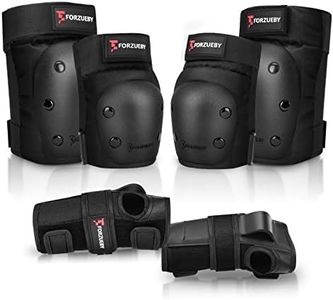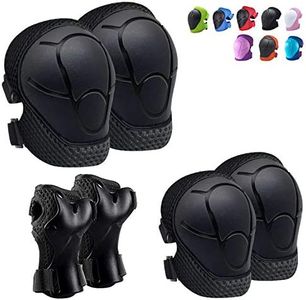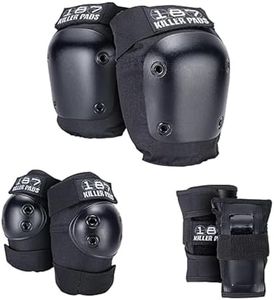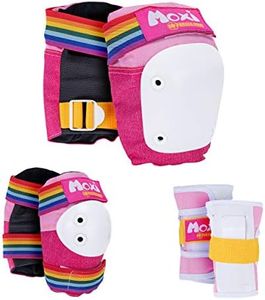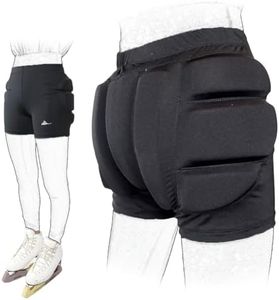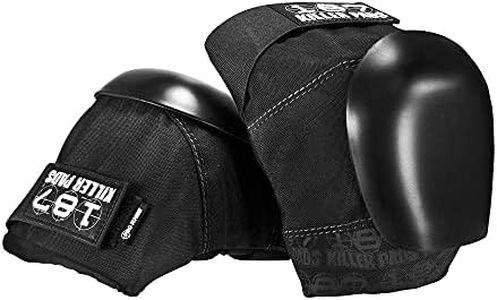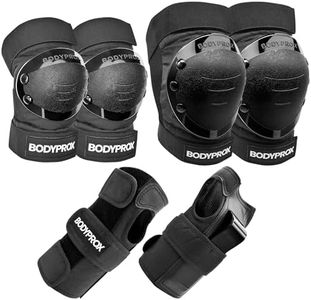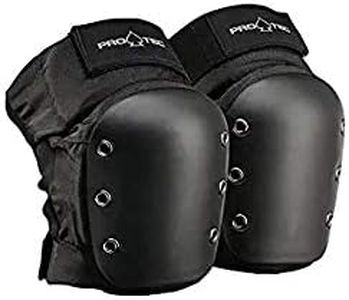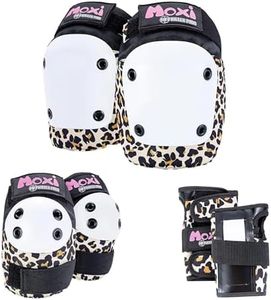We Use CookiesWe use cookies to enhance the security, performance,
functionality and for analytical and promotional activities. By continuing to browse this site you
are agreeing to our privacy policy
10 Best Skating Crash Pads
From leading brands and best sellers available on the web.Buying Guide for the Best Skating Crash Pads
When choosing skating crash pads, it's important to focus on both your safety and comfort. Crash pads are designed to protect your body from impacts and falls often experienced in activities like skateboarding, inline skating, or roller skating. Picking the right crash pads involves understanding your own activity level, the types of falls you might encounter, and which parts of your body you want most protected. Think about how much movement you need, how often you skate, and whether you plan to wear them under or over your clothing.Padding Thickness and MaterialThe thickness and type of padding used in crash pads directly affects the level of protection they offer. Thicker pads usually provide more impact absorption, which is helpful for high-impact falls but can sometimes feel bulky or limit movement. Thinner pads, on the other hand, are less noticeable and usually fit better under clothing but may not protect as much in serious crashes. The most common padding materials are EVA foam, gel inserts, or a combination of both; each offers different balances of comfort and protection. Consider how hard you fall and what you're comfortable wearing: heavier crashers may want thicker pads, while casual riders might favor thinner, more flexible options.
Coverage AreaCoverage area refers to which parts of your body the pads are designed to protect. Some crash pads focus on the hips and thighs, others on the tailbone, and some offer overall coverage for the entire lower body. Choosing the right coverage depends on your activity; for example, skateboarders who often land on their hips may prioritize hip pads, while those worried about tailbone injuries should look for extra padding in that area. Think about where you most often get hurt or feel vulnerable and look for crash pads that reinforce those spots.
Fit and AdjustabilityCrash pads should fit snugly but comfortably to stay in place during movement. Many pads come in a variety of sizes and often feature adjustable straps or elastic waistbands for a secure fit. Proper fit is crucial; pads that are too loose can shift out of place when you fall, while pads that are too tight can restrict your movement and cause discomfort. When selecting, try to find a balance: look for a size that matches your body measurements and try different adjustability options if you can. The more active your style, the more important a secure fit becomes.
Breathability and ComfortSkating can be physically demanding, so breathability is an important factor for crash pads. Pads made with moisture-wicking, breathable fabrics help keep you cool and dry, reducing sweat buildup and irritation during long sessions. If you skate for extended periods or in warmer climates, look for crash pads with mesh panels or specialized fabrics designed for airflow. Comfort also involves the feel of the padding material and the design of seams; softer interiors and flat seams can make a big difference if you plan to wear the pads for hours at a time.
Flexibility and MobilityWhile safety is the top priority, crash pads should not overly restrict your ability to move. Flexibility is especially important if you perform tricks, ride aggressively, or just like to have full range of motion. Pads with articulated designs or stretch panels allow your joints to move more naturally. Think about your skating style: if you're often bending, jumping, or twisting, prioritize flexibility to avoid feeling limited while still keeping protected.
Discretion and StyleSome skaters prefer pads that can be worn discreetly under clothing, while others are fine with visible protective gear. Pads designed for discretion are usually slimmer and have less bulk, making them easier to hide but sometimes sacrificing a bit of protection. Consider where and how you will use them; for street skating where you want a low profile, slim pads could be best, but at the skatepark you might prioritize maximum protection and not mind the added bulk.
